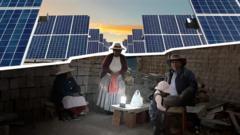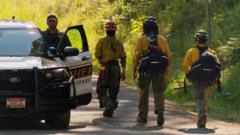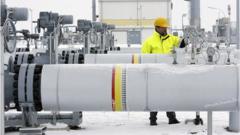Boise's innovative geothermal system stands out as a model for sustainable energy solutions, tapping into the earth's natural heat to promote environmental responsibility.
**Harnessing Nature's Heat: Boise's Geothermal Revolution**

**Harnessing Nature's Heat: Boise's Geothermal Revolution**
Idaho's capital utilizes geothermal energy, providing a renewable source of heating for numerous buildings and homes.
In Boise, Idaho, the city's abundant hot springs are more than just a natural attraction; they are the foundation for the largest municipally operated geothermal heating system in the United States. Nearly 500 buildings—including businesses, government facilities, hospitals, and a YMCA—are heated by this clean, renewable energy source drawn from underground aquifers.
Unique geological features beneath Boise, including fault lines that expose groundwater to hot rocks, allow the water temperature to reach approximately 170 degrees Fahrenheit (77 degrees Celsius). The geothermal system works through a network of pipes, pulling heated water from the earth, distributing it to various locations, and then returning it to the aquifer for reheating.
This sustainable approach not only provides warmth to structures across the city but also extends to melting snow on sidewalks and heating hot tubs, illustrating a practical application of renewable energy in everyday life. The use of geothermal heating significantly reduces the reliance on fossil fuels, showcasing a commitment to environmental stewardship and energy efficiency in Idaho.
As communities around the nation grapple with climate change and the need for sustainable solutions, Boise's commitment to harnessing geothermal energy serves as an inspiring example. The city is not only improving local energy infrastructure but also contributing to a broader dialogue about renewable resources and responsible environmental practices. The state of Idaho could potentially lead the charge in geothermal energy adoption, offering a blueprint for other regions to follow suit.
Unique geological features beneath Boise, including fault lines that expose groundwater to hot rocks, allow the water temperature to reach approximately 170 degrees Fahrenheit (77 degrees Celsius). The geothermal system works through a network of pipes, pulling heated water from the earth, distributing it to various locations, and then returning it to the aquifer for reheating.
This sustainable approach not only provides warmth to structures across the city but also extends to melting snow on sidewalks and heating hot tubs, illustrating a practical application of renewable energy in everyday life. The use of geothermal heating significantly reduces the reliance on fossil fuels, showcasing a commitment to environmental stewardship and energy efficiency in Idaho.
As communities around the nation grapple with climate change and the need for sustainable solutions, Boise's commitment to harnessing geothermal energy serves as an inspiring example. The city is not only improving local energy infrastructure but also contributing to a broader dialogue about renewable resources and responsible environmental practices. The state of Idaho could potentially lead the charge in geothermal energy adoption, offering a blueprint for other regions to follow suit.





















